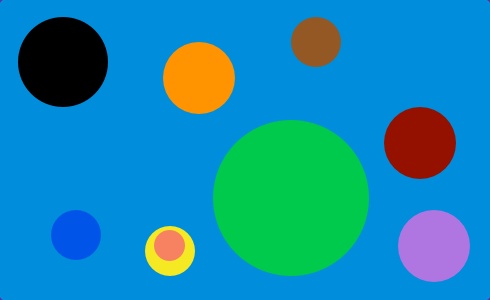Grade Level
3 - 5
minutes
15 min - 1 hr
subject
Physical Science
Activity Type:
exploration activity
Most colors that we see are a combination of the three primary colors of light: red, green, and blue. These “additive” colors can mix together to form other familiar hues such as yellow, magenta, and cyan. Colored lenses change our perception of the world’s colors by acting like filters: they absorb all colors of light except for whatever color the lenses are. For example, glasses with blue lenses absorb green light and red light but allow blue light (and blue-containing colors such as purple) to pass through into the eye. While wearing blue lenses, objects that normally appear green and red will become harder to see. In other words, when we look through colored lenses, we’re actually seeing what the world would look like with some of the primary colors of light removed.
Explore this phenomenon by making a cool pair of color-filtering glasses using tinted cellophane or light filters. The directions are below:
- Print out the attached glasses template on some cardstock and follow the instructions to make frames. Alternatively, you can pop out the lenses of some old sunglasses and use those frames instead.
- Cut out new lenses from colored cellophane or colored light filters. The glasses will work better if you use at least three layers of colored cellophane to make each new lens. Blue, red, or green lenses will have the most dramatic impact on your perception.
- Tape your new lenses into your makeshift frames, being careful not to cover the lenses with tape.
- Put on your glasses and explore!
What colored objects become difficult to see? What colors are easy to see? Are there certain colors that are nearly impossible to see? Now try on another pair of glasses with lenses of a different color. How do they change what you are able to see?
Try this experiment:
- Put on your new color-filtering glasses.
- Scroll down the page and record the number of circles you see in each image.
- Take off your glasses. How many circles can you see now? Which ones were difficult to see, and what do they have in common? How did background color influence your ability to see the circles?



Related Links:
– Listen to Alan Alda on Science Friday discuss his challenge to scientists: define “color.”
– Use this color vision simulator to make a rainbow by mixing red, green, and blue light. Manipulate light filters to change the color of light seen by an observer.
Educator's Toolbox
Meet the Writer
About Ariel Zych
@arieloquentAriel Zych is Science Friday’s director of audience. She is a former teacher and scientist who spends her free time making food, watching arthropods, and being outside.
